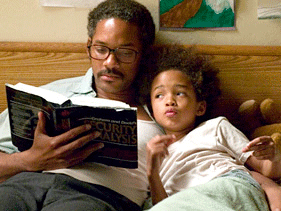Uniforms Implemented in Schools will make schools a more safer place to be
 http://www.komotv.com/news/local/6370112.html?video=YHI&t=a
http://www.komotv.com/news/local/6370112.html?video=YHI&t=aThe International Debate Education Association, http://www.idebate.org/about/index.php, develops, organizes and promotes debate and debate-related activities in communities throughout the world. The debate I came across was the question of whether children should wear a uniform to school or not. In some countries school uniform is normal and most schools make their students wear one. Britain is the most obvious example of this. Uniform is also required at almost all schools in Japan. In other countries, particularly in continental Europe, the USA and Canada, uniform is very rare in state-funded schools, although private schools may have one.Debates about school uniform have been going on for decades in different countries and districts. At first uniform rules were seen as a way of stopping children dressing in gang colors in troubled urban areas. They also claim that introducing uniform leads to better discipline and educational results encouraged other school districts and schools to make a change. Also, introducing uniform can reduce crime in schools, especially violence and theft. Teachers at several US schools report lower levels of violence and crime after uniforms were introduced. This is partly due to better discipline, but also because students no longer come to school wearing desirable designer clothes. Uniform also helps makes schools safer as it makes intruders much easier to spot. Anyone not in uniform can easily be seen and reported. Both the Clinton and Bush administrations have been in favor of school uniforms in the US. There is no proper research that shows that introducing uniform cuts crime in schools. Uniforms actually lead to more violence. They make students from rival schools much more obvious in the street or on the bus. “Us-and-them” feelings are worsened by uniform and bullying and fighting between students from different schools can increase.
One example I came across in my research happened in a small town in Mississippi called Clarksdale. A committee of faculty and parents proposed a full uniform policy for the Clarksdale Municipal School District (http://www.zwire.com/site/news.cfm?brd=2038). Apparently there have been many cases in this town where uninvited people enter the schools and cause problems such as fights. The announcement was made recently by Linda Downing, principal of Oakhurst Middle School, and Reginald Griffin, principal of W.A. Higgins Middle School. Griffin, a former law enforcement officer, said gang-inspired violence was a key in the handbook proposal. "Wearing uniforms prevent gang colors from being worn at school," he said. "It decreases violence and theft of expensive clothes and instills discipline." Griffin said wearing uniforms also helps instill a sense of community and reduces student distraction. "It increases school safety by recognizing students who do not belong on campus," he said.
Here is an example of a school district in Long Beach, California that adopted school uniforms as part of their strategy.
Long Beach, California
Type: Uniforms are mandatory in all elementary and
middle schools. Each school in the district
determines the uniform its students will wear.
Opt-out: Yes, with parental consent
Size of program: 58,500 elementary and middle school students
Implementation date: 1994
Support for disadvantaged students: Each school must develop an assistance plan for families that cannot afford to buy uniforms. In most cases, graduating students either donate or sell used uniforms to needy families.
Results: District officials found that in the year following implementation of the school uniform policy, overall school crime decreased 36 percent, fights decreased 51 percent, sex offenses decreased 74 percent, weapons offenses decreased 50 percent, assault and battery offenses decreased 34 percent, and vandalism decreased 18 percent. Fewer than one percent of the students have elected to opt out of the uniform policy.
Dick Van Der Laan of the Long Beach Unified School District explained, "We can't attribute the improvement exclusively to school uniforms, but we think it's more than coincidental." According to Long Beach police chief William Ellis, "Schools have fewer reasons to call the police. There's less conflict among students. Students concentrate more on education, not on who's wearing $100 shoes or gang attire."
The topic of gangs is also very important. Uniforms increase the likelihood of gang fights in the inner city schools. For example, in many cities there are two very popular, notorious gangs that many students take part in. They are the “bloods” and the crips.” The two are identified with what they are wearing. The Crips adopted the color blue for their clothing to set them apart from other gang members and the Bloods adopted the color red. They are one of the main reasons why the request of school uniforms can help to decrease violence in public schools and make them a safe place to be (http://gangsta411.com/Crips-&-Bloods.htm). According to the 1996 State of the Union Address, Bill Clinton spoke out about school uniforms. He said that they could "make public schools more orderly centers of learning and safer sanctuaries for children" (http://clinton2.nara.gov/WH/New/other/sotu.html).
There are many incidents in which gangs have been involved because of a student wearing the wrong “color.” At the bus stop at a suburban Maryland school, a high school student was murdered when two masked assailants stole two other students' name brand jackets. Other thefts have involved name brand sneakers and shoes (Holloman). School uniforms would prevent students from bringing expensive clothing to school, therefore decreasing the theft of school clothing. Gang related violence is also decreased by the wearing of school uniforms. This prohibits the wearing of certain gang colors like I stated before, blue for the "Crips" or red for the "Bloods." The primary personal accessories which identify gang affiliations are hats, handkerchiefs, shoelaces, and belts.
A couple of years ago, 5,500 secondary school principals were asked about uniforms and 70 percent thought they'd reduce violence. The theory is that because kids fight over fashion accessories, nobody will have anything worth fighting over if everyone is dressed the same, and nobody will be teased about outfits. In 2000, almost 16 percent of public elementary schools in the United States had school uniforms. If you break down that 16 percent, urban and rural areas dominate the landscape of school uniform policy. Suburban areas, which have a tendency to have a higher economic profile, lag behind.
There will be a greater sense of safety for all which includes students, parents and faculty also the security in schools if uniforms are implemented. Rules about uniforms should be seriously considered for the well-being of students. Other initiatives that many schools have used in conjunction with uniforms to address specific problems in their community include aggressive truancy reduction initiatives, drug prevention efforts, student-athlete drug testing, community efforts to limit gangs, a zero tolerance policy for weapons, character education classes, and conflict resolution programs. Working with parents, teachers, students, and principals can make a uniform policy part of a strong overall safety program, one that is supported in the community. In conclusion to my investigation I found that many local communities are deciding to adopt school uniform policies as part of an overall program to improve school safety and discipline. In addition, many private and close-minded schools have required uniforms for a number of years. Still other schools have implemented dress codes to encourage a safe environment by, for example, prohibiting clothes with certain language or gang colors.
Holloman, Lillian. "Dress-Related Behavioral Problems and Violence in the Public School Setting: Prevention, Intervention, and PolicyA Holistic Approach." The Journal of Negro Education. Summer 1996. November 1, 2003.








